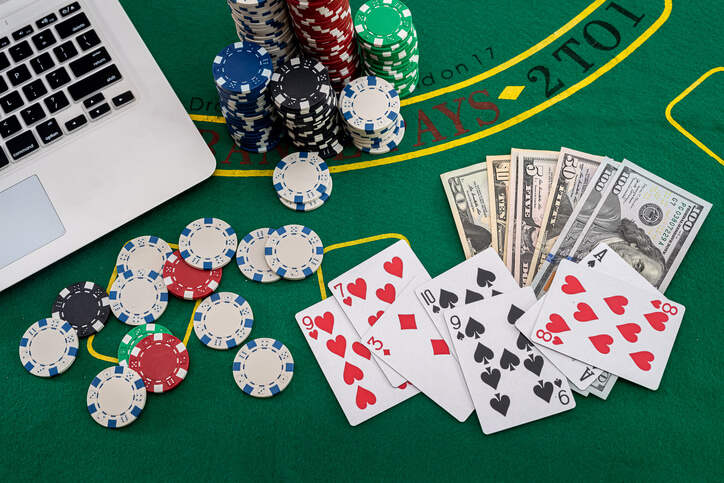Grasping Return to Player in Slots
As for slot games, players frequently get enthralled by the bright lights, exciting themes, and the adrenaline of turning the reels. But beyond the sparkle and excitement lies an essential concept that every gamer should be aware of: RTP, or RTP. This vital metric holds great importance in determining how much of your wagered money will return to you over time, affecting your gameplay and strategy as you play.
RTP is typically represented as a percent and reflects the average amount of money returned to players compared to the total amount wagered. For instance, if a slot game has an RTP of 95 percent, it means that, on average terms, players get back ninety-five dollars for every $100 they stake. Understanding this concept can help players make informed decisions when deciding on slots to spin, ultimately improving their overall casino experience.
What exactly the definition of RTP?
RTP, also known as RTP, represents a significant concept within casino slots games. It denotes the percentage of total wagered amounts which a slot machine is designed to refund to players through its operation. For example, if a slot has an RTP of 95 percent, this means that, in theory, players are likely to get back ninety-five dollars for every 100 dollars wagered in the long run. Grasping RTP assists players analyze the likely profitability of the various slots available.
RTP isn’t a surety of personal wins but instead a average computed throughout many spins. Individual players’ experience may differ significantly due to the chance built-in in slot games. A higher RTP suggests more favorable odds for the player, which makes it an essential aspect to consider when selecting the slots to play. Nonetheless, even with a high RTP, there can be stretches during which players experience losses, since luck plays a significant role.
It should also be noted that various slots have varying RTP percentages. Some games might feature a reduced RTP because of a high level of fun or distinct elements, while others hold a increased percentage to draw in more risk-averse players. Understanding RTP enables players to make educated decisions about their play strategies and manage their money wisely while relishing the thrill of slot machines.
How Return to Player is Being Calculated
The Return to Player, also known as RTP, is a vital indicator in the world pertaining to gambling slot machine titles. This indicates the proportion from all bet funds which a gaming device can be expected to return to players over time. Understanding the method by which this measurement can be derived demands understanding of both the slot’s architecture and its payout structure. The return value is calculated via complex algorithms and statistical analyses performed during the game creation process. Game creators take into account various factors, including the frequency of successful combinations and the size for payouts on each outcome.
To compute RTP, developers model a significant quantity of spins on the game. Such simulations help determine how much on average, a gambler is likely to earn according to their wagers. For example, when a slot game has an average return of 95 percent, it suggests that, theoretically, among every one hundred dollars wagered, players can expect to receive ninety-five dollars in return in the long term. This value doesn’t represent how much a gambler will win in a one play and over a couple of plays; rather, it reflects long-term payout expectations.
The values of RTP tend to be usually released from the gaming house or game creator. Players should always seek out this data while selecting a casino slots, as it has the potential to influence their gaming experience. nhà cái tk88 A greater RTP usually indicates a higher probability to recoup a segment of wagered money, even though specific sessions can vary greatly. Understanding this concept enables gamblers to choose wisely and enhance their overall enjoyment within the world of slot games.
Value of RTP in Casino Games

Grasping the RTP or Return to Player is important for any player involved in slot machines. Return to Player represents the percentage of total bets that a game is engineered to pay back to players over the long run. A higher RTP shows that players can expect receiving a bigger share of their bets back, making it an important factor for those looking to enhance their gambling enjoyment. Understanding this number helps players make informed decisions about which slots to play, as it can significantly influence their chances of winning.
Additionally, Return to Player holds a crucial role in the overall fairness and clarity of casino slots. Gamers are often drawn to games with higher return rates because they provide a better opportunity of winning over the long term. Casinos and software creators use RTP as a marketing tool to attract gamers, guaranteeing they maintain a competitive edge in the growing gaming industry. By understanding of RTP, players can select games that match with their comfort level and objectives.
In conclusion, the idea of RTP promotes responsible gambling behavior. Recognizing that not all slots will provide short-term winnings and that Return to Player is determined by long-term play, gamers can manage their expectations and playing habits effectively. This understanding enhances the enjoyment of casino slots while fostering a more balanced gambling landscape. Gamers who grasp the significance of RTP are more prone to have a better time and lessen the risks of gambling issues.
